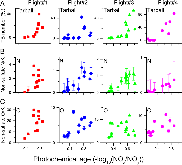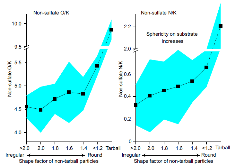Spherical tarball particles form through rapid chemical and physical changes of organic matter in biomass-burning smoke
- Department of Atmosphere, Ocean and Earth System Modeling Research, Meteorological Research Institute, 3050052 Tsukuba, Japan,
- Environmental and Climate Sciences, Brookhaven National Laboratory, Upton, NY 11973,
- Environmental and Climate Sciences, Brookhaven National Laboratory, Upton, NY 11973,, Center for Aerosol Science and Engineering, Department of Energy, Environmental and Chemical Engineering, Washington University in St. Louis, St. Louis, MO 63130,
- Atmospheric Sciences and Global Change Division, Pacific Northwest National Laboratory, Richland, WA 99352,
- Center for Sensor Systems and Technology, Aerodyne Research Inc., Billerica, MA 01821,
- Center for Global Environmental Research, National Institute for Environmental Studies, 3058506 Tsukuba, Japan,
- Graduate School of Science, The University of Tokyo, 1130033 Tokyo, Japan,
- School of Earth and Space Exploration, Arizona State University, Tempe, AZ 85287,, School of Molecular Sciences, Arizona State University, Tempe, AZ 85287
Biomass burning (BB) emits enormous amounts of aerosol particles and gases into the atmosphere and thereby significantly influences regional air quality and global climate. A dominant particle type from BB is spherical organic aerosol particles commonly referred to as tarballs. Currently, tarballs can only be identified, using microscopy, from their uniquely spherical shapes following impaction onto a grid. Despite their abundance and potential significance for climate, many unanswered questions related to their formation, emission inventory, removal processes, and optical properties still remain. Here, we report analysis that supports tarball formation in which primary organic particles undergo chemical and physical processing within ~3 h of emission. Transmission electron microscopy analysis reveals that the number fractions of tarballs and the ratios of N and O relative to K, the latter a conserved tracer, increase with particle age and that the more-spherical particles on the substrates had higher ratios of N and O relative to K. Scanning transmission X-ray spectrometry and electron energy loss spectrometry analyses show that these chemical changes are accompanied by the formation of organic compounds that contain nitrogen and carboxylic acid. The results imply that the chemical changes increase the particle sphericity on the substrates, which correlates with particle surface tension and viscosity, and contribute to tarball formation during aging in BB smoke. Finally, these findings will enable models to better partition tarball contributions to BB radiative forcing and, in so doing, better help constrain radiative forcing models of BB events.
- Research Organization:
- Brookhaven National Laboratory (BNL), Upton, NY (United States); Pacific Northwest National Laboratory (PNNL), Richland, WA (United States)
- Sponsoring Organization:
- USDOE Office of Science (SC), Biological and Environmental Research (BER)
- Grant/Contract Number:
- SC0012704; KP1701000/57131; SC0014287; AC06-76RLO1830; 20568; AC05-76RL01830
- OSTI ID:
- 1564418
- Alternate ID(s):
- OSTI ID: 1559998; OSTI ID: 1570765
- Report Number(s):
- BNL-212046-2019-JAAM; PNNL-SA-140926
- Journal Information:
- Proceedings of the National Academy of Sciences of the United States of America, Journal Name: Proceedings of the National Academy of Sciences of the United States of America Vol. 116 Journal Issue: 39; ISSN 0027-8424
- Publisher:
- Proceedings of the National Academy of SciencesCopyright Statement
- Country of Publication:
- United States
- Language:
- English
Web of Science
Similar Records
Understanding Biomass Burning Aerosol via Integrated Analyses of Aerosol Mass Spectrometry Data from DOE Campaigns and ACRF Long Term Measurements
Chemical composition and morphological analysis of atmospheric particles from an intensive bonfire burning festival


